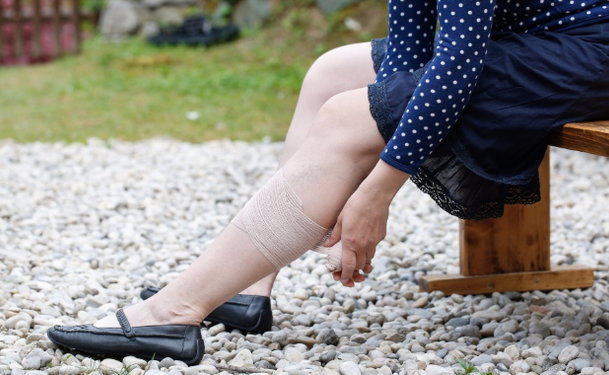If you are thinking about having a varicose vein or spider vein treatment performed, you may be wondering what to expect during recovery. Your doctor will provide you with specific information, but these general guidelines can give you an idea of what to expect after your vein treatment.
Recovery After Sclerotherapy for Spider Veins
Sclerotherapy is a treatment for spider veins and varicose veins. During the procedure, your doctor will inject a medication into the vein to make it collapse and dissolve. Afterwards, you should be able to return to your regular activities on the same day, including work.
You will need to wear compression stockings for three to seven days after the procedure. You should also avoid activities that restrict the movement of your legs, like sitting or lying in bed for a long time. Walking throughout the day may help speed up your recovery.
Your spider or varicose veins should start to fade within a few weeks, although it can take several months before they are gone completely. You may develop a brown stain on the skin caused by blood remaining in the vein. This discoloration should fade within a few years.
Depending on how many veins you have treated, you will need three to four sessions. However, sclerotherapy won’t stop new spider veins from forming, but these can be easily treated later.
The most common side effects of sclerotherapy include:
- Pain, swelling or redness in the area near the injection site
- Allergic reaction to the medication, which may show up as itchiness or a rash
- Bruising or fine red colored blood vessels (matting) on the skin near the treatment area
Contact your doctor immediately if you experience changes in your vision, headache, dizziness, or unusual amounts of pain or swelling in the leg after the procedure.
Healing After Laser Vein Treatments
Laser vein treatments cause spider veins to fade away by heating them with focused light. After the procedure, you should be able to resume your regular activities immediately, including work. You can speed your recovery by walking frequently throughout the day and avoiding long periods of sitting or bed rest.
Your doctor may ask you to wear a compression stocking for one to two days. You should also avoid exposing the treated part of your body to direct sunlight, so apply a sunscreen of SPF 30 or stronger before you go outside.
A full treatment will take three to four sessions, depending on how many spider veins you have. In some cases, treated spider veins may come back. Also, new spider veins can form. Both of these can be treated later with laser therapy.
The most common side effects of laser vein treatment include:
- Darkening of the skin (hyperpigmentation)
- Pain
- Bruising
- Matting
- Sunburn-like burns
The pain should last for only a few seconds or minutes after treatment, and range from mild stinging to a burning feeling. The skin discoloration usually goes away after a short time, but may last for up to a year.
Recovery After Endovenous Thermal Ablation
Endovenous thermal ablation is a treatment for varicose veins that are deeper in the leg. In this procedure, a laser or radiofrequency probe is inserted into the varicose vein to damage the vein and cause it to close. Blood will flow naturally to other veins in the leg.
You should return to your normal activities the same day. Avoid more strenuous activities like working out at the gym for four to five days. You will have to wear a compression stocking for several days. Walking regularly may also speed your recovery.
The most common side effects of endovenous thermal ablation include:
- Bruising or pain near the treatment area
- Blood clots in the veins of the treated leg
- Irritation of the nerves near the treated veins
Healing After Phlebectomy
Phlebectomy is a treatment for varicose veins that involves removing the vein through several small incisions in the skin. This procedure is useful for treating bulging veins on the surface of the skin.
After the procedure, you should be able to return to your everyday activities within a day. After four to five days you can resume more strenuous activities like exercise, yoga and walking for longer periods.
You will need to wear compression stockings for several days and elevate your legs multiple times a day. Walking several times a day for less than fifteen minutes at a time can help you heal faster.
The punctures or nicks in the skin are so small that they commonly heal without the need for sutures. These will disappear completely after a few months.
The most common complications of phlebectomy include bruising, discomfort and oozing or bleeding through the bandages. Contact your doctor immediately if you have more severe bleeding, signs of infection or fever.
Updated on Aug. 10, 2017


